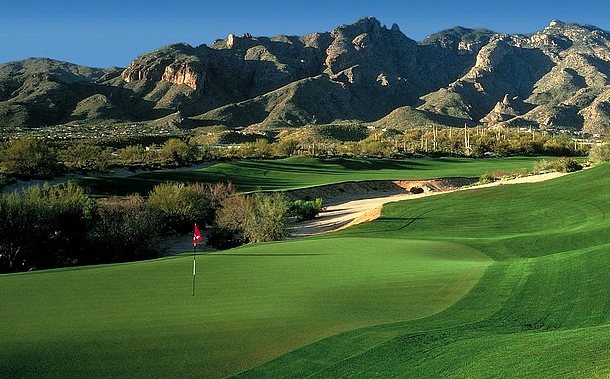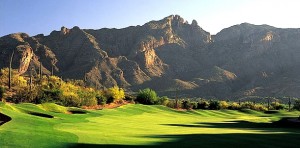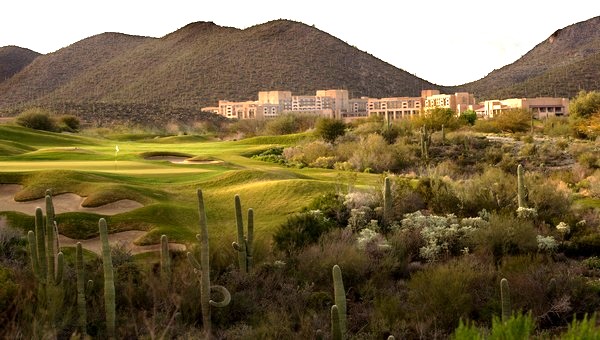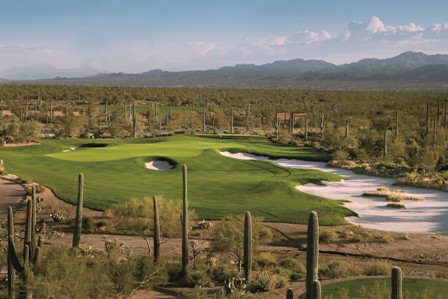Arizona Golf Authority AZGA Golf Course Review: If you’re in Tucson and like playing private country club golf on dogleg fairways, you’ll love playing Skyline Country Club. Absent the par-3s, you’ll only find one “dead straight” hole on the entire course; all the rest require a left or right turn and in most cases those turns are sharp and dramatic.
While it is a relatively short course, there are plenty of challenges to test your best: narrow fairways and plenty of O.B. stakes, sharp elevation changes, uneven lies and multi-tiered greens. In other words, shot-making is the key to success here.
Built alongside the picturesque Santa Catalina Mountains, Skyline is one of Tucson’s oldest private country clubs. Built in 1961, it is believed to be the only course ever designed by one Mr. Guy S. Greene. Tom Clark of Ault, Clark and Associates oversaw a re-design in 1989 and the company also handled a renovation in 2003.
Mr. Greene’s original design took advantage of the topography at 3,000 feet of elevation, creating holes that weave their way through the mountainous terrain, using them as backdrops and providing excellent views of the Tucson skyline in the distance. The par-71 layout has five par-3s and four sets of tees that range from 4,951 to 6,138 yards, with a rating of 69.5 and slope of 129 from the tips.
Water appears on just two holes and fewer than 40 bunkers threaten play, but the design still puts a premium on accuracy rather than length. Several risk-reward holes titillate here, starting with the fifth. The 478-yard par-5, a sharp dogleg left, can be reached in two shots by many golfers, provided they successfully cut the corner with out of bounds on both sides and can keep their approach on the smallest green on the course.
The seventh and ninth holes are excellent par-3s, which play 146 and 181 yards from the back tees. Both play uphill over lakes. The 7th has four bunkers surrounding a green that slopes back to front. No. 9 is considered one of the best par-3s in the Tucson area and features a pair of large bunkers behind a wide-but-shallow green; yardage control is paramount here.
Thrilling golf begins early on the backside. The 10th hole is a drivable par-4 of 256 yards, but your tee shot better be accurate because there are four large fairway bunkers to negotiate, along with three large, deep greenside bunkers.
The best par-5 is the 16th, which plays at 519 yards; a double dogleg routing and a two-tiered green guarded by bunkers front-left and front-right provide all the fun.
Skyline has limited practice areas with putting and chipping greens but no driving range. Other amenities include state-of-the-art tennis courts and swimming, plus fine and casual dining with an excellent Sunday brunch.
Read the Arizona Golf Course List AZGA Player’s Arizona Golf Course Review for every golf course in Arizona at www.arizonagolfauthority.com/coursedirectory.
It’s “All Things Arizona Golf” from the Arizona Golf Authority.





